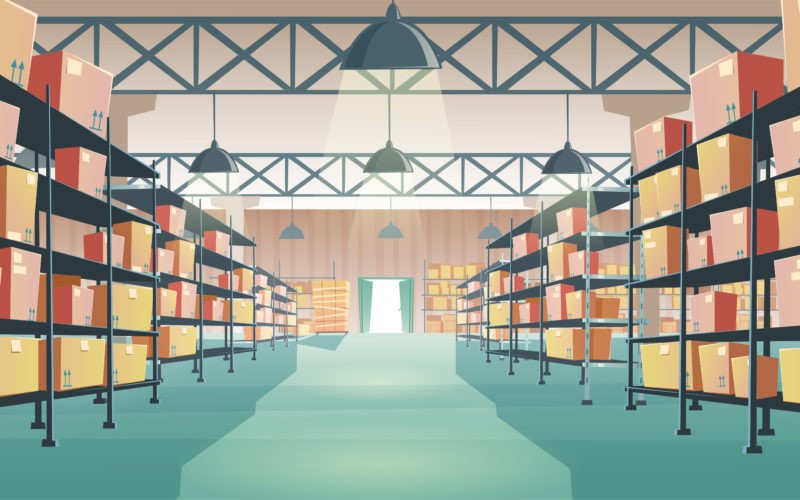The age of e-commerce has revolutionized the way we shop and conduct business. With the exponential growth of online retail, the need for efficient and sustainable last-mile delivery solutions has become more critical than ever. Technological advancements in the field of robotics and autonomous systems have paved the way for innovative and groundbreaking last-mile delivery methods. From drones to robots, these cutting-edge solutions are transforming the logistics industry and dramatically improving the customer experience. In this article, we will explore the latest last-mile delivery innovations and discuss why businesses cannot afford to ignore these emerging technologies.
Drones: Delivering Speed and Precision
Unmanned aerial vehicles (UAVs), commonly known as drones, have taken the world by storm in recent years. From photography to disaster relief, drones have demonstrated their versatility and effectiveness across various industries. In the realm of last-mile delivery, drones offer a range of benefits that traditional methods simply cannot match.
Speed: As aerial vehicles, drones can bypass traffic congestion and other ground-level obstacles, significantly reducing delivery times. This is especially beneficial in urban areas, where traffic can cause substantial delays. Research suggests that drone deliveries can be up to five times faster than traditional ground-based methods.
Precision: Drones are equipped with advanced GPS systems, allowing them to navigate accurately to delivery locations. This level of precision ensures that packages are delivered safely and efficiently, minimizing the risk of lost or damaged items.
Sustainability: Drone deliveries have a considerably smaller carbon footprint compared to traditional delivery vehicles. By reducing the number of ground-based vehicles required for deliveries, businesses can minimize their environmental impact and contribute to a greener future.
Several companies, such as Amazon, UPS, and Wing (a subsidiary of Alphabet), have already begun testing and implementing drone delivery systems. These early adopters are setting the stage for a widespread adoption of drone technology in the logistics industry.
Autonomous Delivery Robots: Navigating the Urban Jungle
While drones have captured much of the public’s attention, autonomous delivery robots are making a significant impact on last-mile delivery. Designed to traverse sidewalks, crosswalks, and other pedestrian environments, these robots offer a unique and effective solution for urban deliveries.
Cost-efficiency: Autonomous delivery robots can operate at a lower cost compared to traditional delivery methods. By eliminating the need for human drivers and fuel, businesses can save on labor and operational expenses.
Accessibility: In densely populated urban areas, navigating narrow streets and alleys can be challenging for traditional delivery vehicles. Autonomous delivery robots, on the other hand, are designed to navigate these environments with ease. This increased accessibility allows businesses to reach customers in locations that were once considered inaccessible.
Safety: Equipped with a range of sensors, cameras, and navigation systems, autonomous delivery robots are designed to prioritize safety. These systems enable the robots to detect and avoid obstacles, ensuring the safe delivery of packages and minimizing the risk of accidents.
Leading companies such as Starship Technologies, Nuro, and Kiwibot have already deployed autonomous delivery robots in various cities worldwide. With continued advancements in robotics and artificial intelligence, these robots are poised to become a common sight on urban sidewalks.
Smart Lockers: Secure and Convenient Package Delivery
Smart lockers offer a secure and convenient solution for last-mile deliveries by providing a centralized location for customers to pick up their packages. These lockers can be installed in public spaces, apartment complexes, and office buildings, allowing customers to retrieve their items at their convenience.
Security: Smart lockers are equipped with advanced security features, such as unique access codes and security cameras, to ensure that packages are only accessible to the intended recipient.
Convenience: By offering 24/7 access, smart lockers provide customers with the flexibility to pick up their packages whenever it suits them. This eliminates the need for customers to wait at home for deliveries or coordinate with courier services, improving the overall customer experience.
Reduced Delivery Costs: By consolidating deliveries to a single location, smart lockers can help reduce delivery costs for businesses. This is particularly beneficial for companies that struggle with the high costs associated with multiple delivery attempts due to customers not being home to receive packages.
Leading companies, such as Amazon, have already embraced smart locker technology with their Amazon Locker service. Other companies, like Parcel Pending and InPost, have also entered the market, offering their smart locker solutions to businesses and consumers alike.
Crowdshipping: The Power of the Crowd
Crowdshipping leverages the power of the crowd to complete last-mile deliveries. By connecting individuals who need items delivered with local drivers already heading in the same direction, crowdshipping offers a more sustainable and efficient delivery model.
Environmental Impact: By utilizing drivers who are already on the road, crowdshipping can help reduce the number of vehicles needed for deliveries, lowering overall carbon emissions.
Cost Savings: By tapping into a network of local drivers, crowdshipping can help businesses save on delivery costs. This is particularly advantageous for small businesses that may not have the resources to invest in their own fleet of delivery vehicles.
Flexibility: Crowdshipping offers a flexible and scalable delivery model, allowing businesses to adapt to changing demand and customer needs easily.
Companies like Roadie, Deliv, and Nimber have already started to leverage crowdshipping for last-mile deliveries. As the sharing economy continues to grow, crowdshipping could become an increasingly popular delivery option. Companies such as RoadRunner Auto Transport have already started to implement A.I. technologies in order to make their deliveries a much more smooth, reliable, and predictable process.
The advancements in last-mile delivery technology are not limited to small packages and parcels; they are also making waves in the auto transport industry. With the emergence of autonomous vehicles and innovative delivery solutions, the process of transporting and delivering vehicles is undergoing a significant transformation.
Autonomous Vehicle Transporters: Self-driving vehicle transporters are set to revolutionize the auto transport industry. By eliminating the need for human drivers, these transporters can operate around the clock, increasing efficiency and reducing delivery times. In addition, autonomous vehicle transporters can leverage advanced navigation systems and real-time traffic data to optimize routes, further improving delivery speeds.
Vehicle Delivery Drones: While still in the early stages of development, vehicle delivery drones have the potential to disrupt the auto transport industry. These drones are designed to lift and transport vehicles from one location to another without the need for traditional transporters. While the technology and infrastructure required to support large-scale vehicle delivery drone operations are not yet in place, the potential for this innovation to transform the auto transport industry is undeniable.
Remote Vehicle Handover: In response to the growing demand for contactless delivery options, some auto transport companies are exploring remote vehicle handover solutions. By leveraging smart technologies, such as digital keys and remote vehicle access, customers can take delivery of their vehicles without the need for physical interaction with delivery personnel. This not only offers increased convenience for customers but also reduces the potential for damage or theft during the handover process.
As the auto transport industry continues to evolve, businesses operating in this sector must adapt to the changing landscape or risk being left behind. To help the industry along, automotive platforms like Sonatus’s Foundation cloud software enables OEMs to build a flexible vehicle architecture that can evolve over time. By embracing the latest innovations in autonomous transport and delivery technology, auto transport companies can streamline their operations, reduce costs, and provide a superior customer experience.
Conclusion
The last-mile delivery landscape is rapidly evolving, with new innovations and technologies disrupting the industry at an unprecedented pace. From drones and autonomous delivery robots to smart lockers and crowdshipping, these cutting-edge solutions are revolutionizing the way businesses deliver goods to their customers.
As consumer expectations continue to rise, businesses must adapt to stay competitive in the market. By embracing these last-mile delivery innovations, businesses can not only meet but exceed customer expectations while simultaneously reducing costs and improving efficiency. The future of last-mile delivery is undoubtedly exciting, and businesses that choose to ignore these advancements do so at their own peril.












